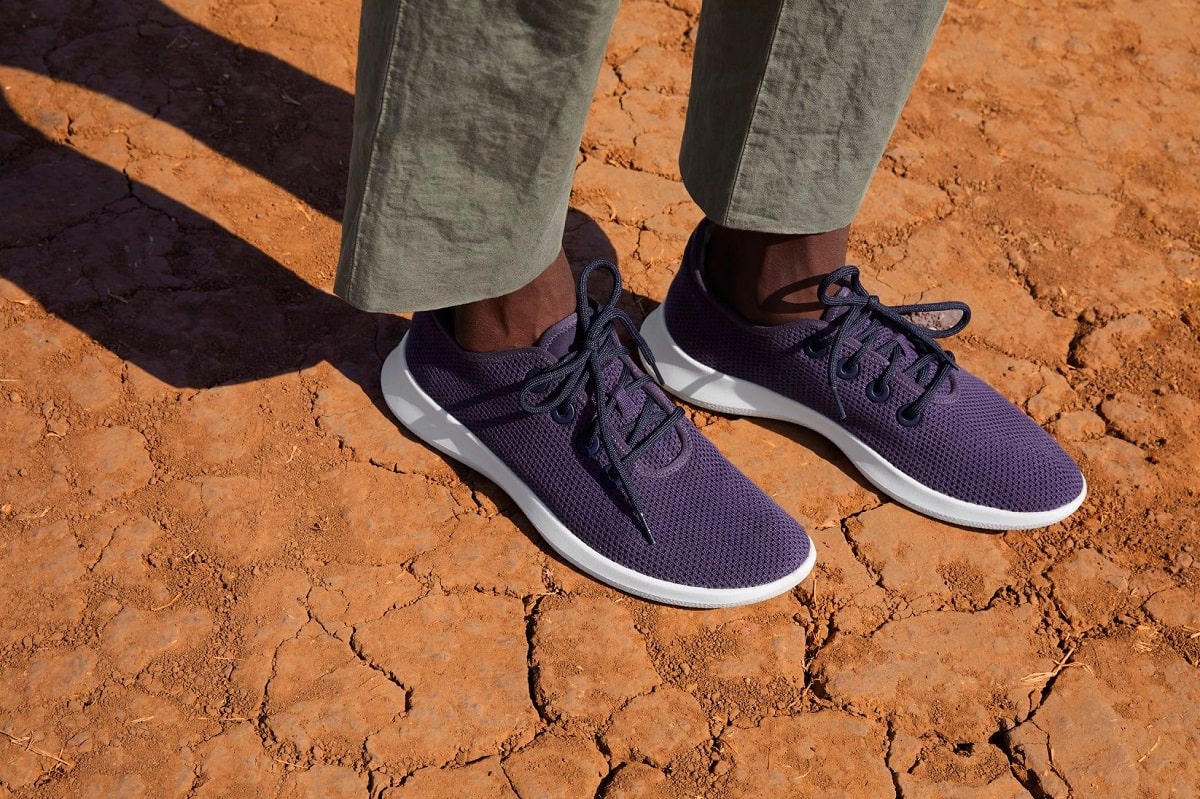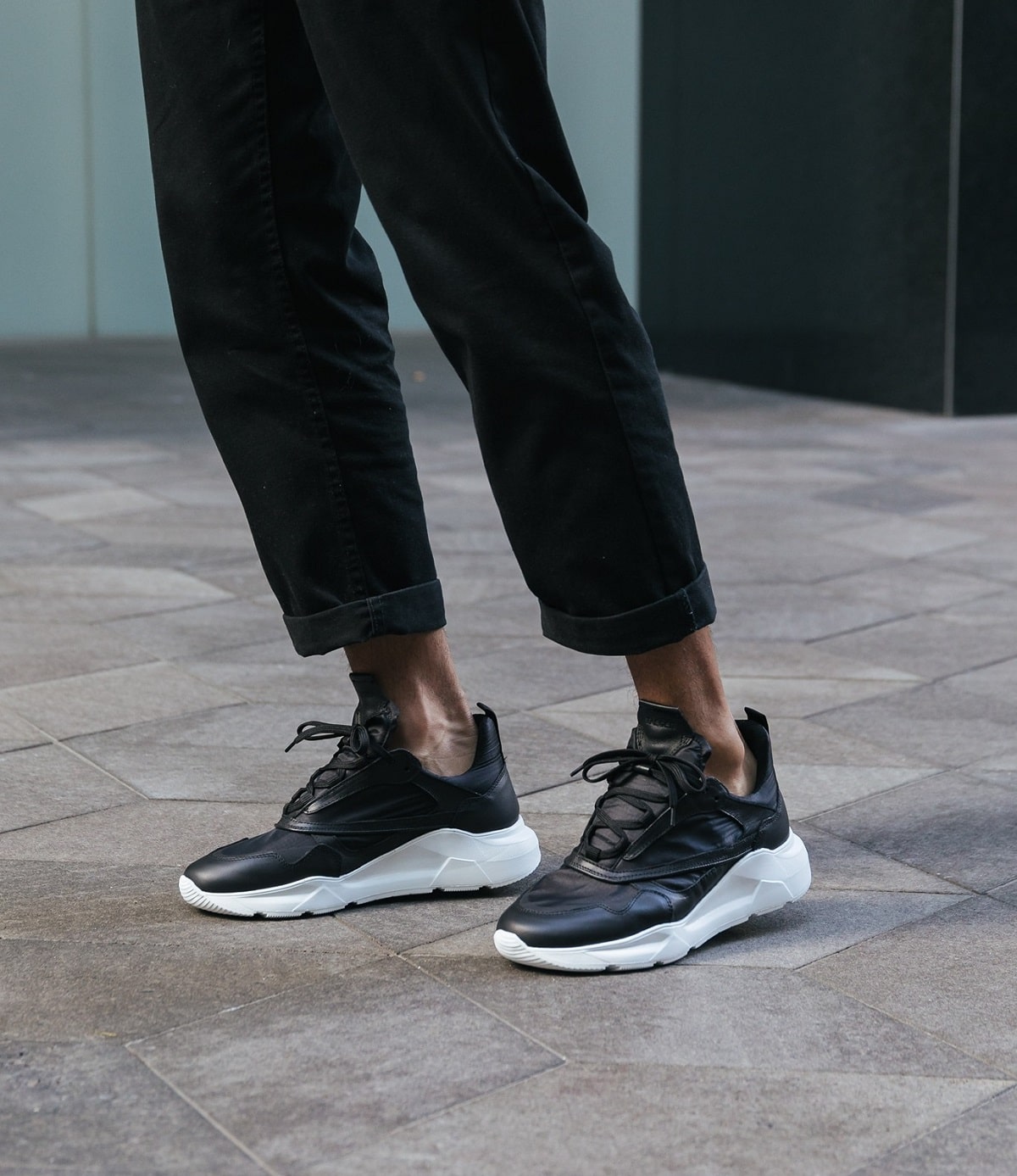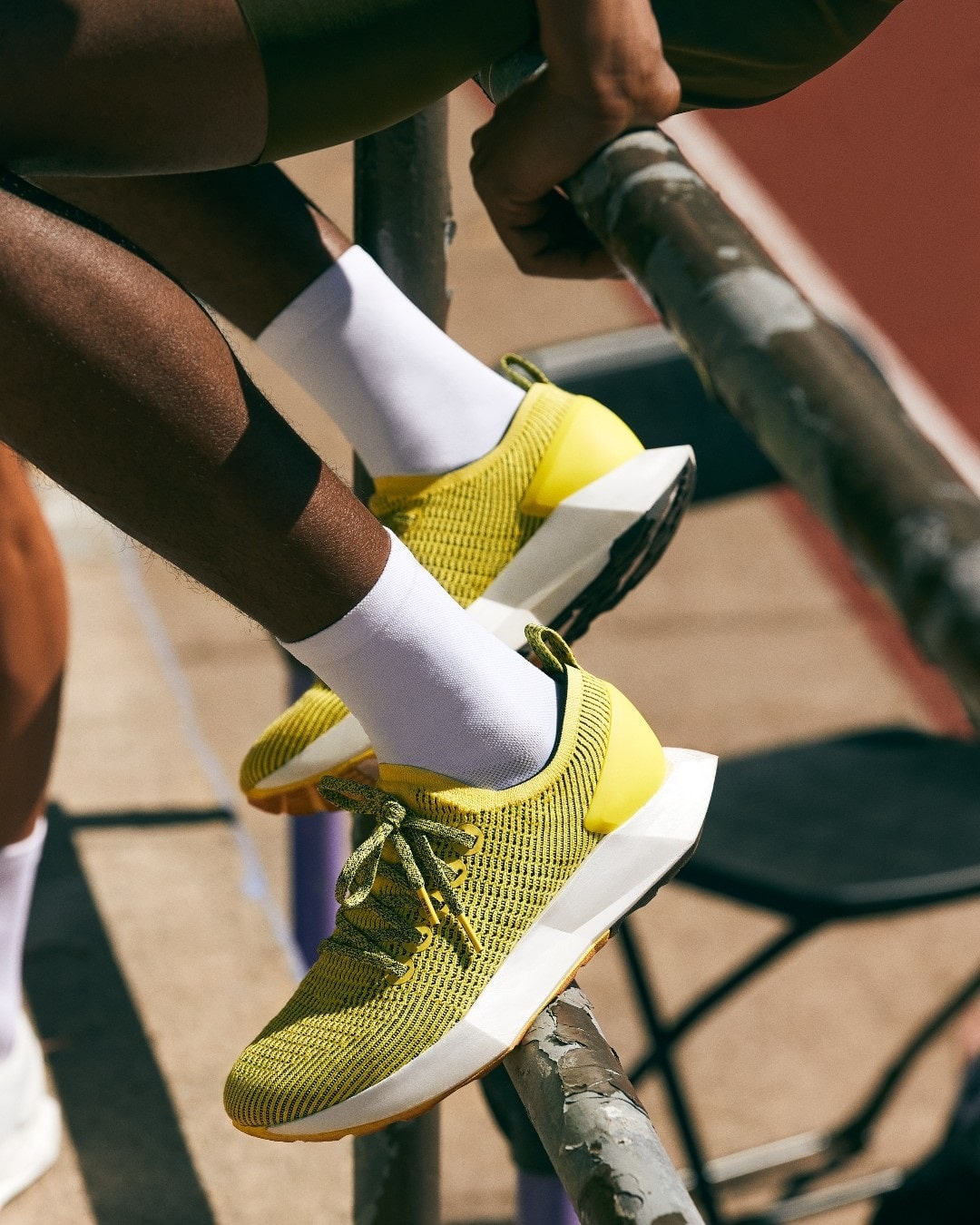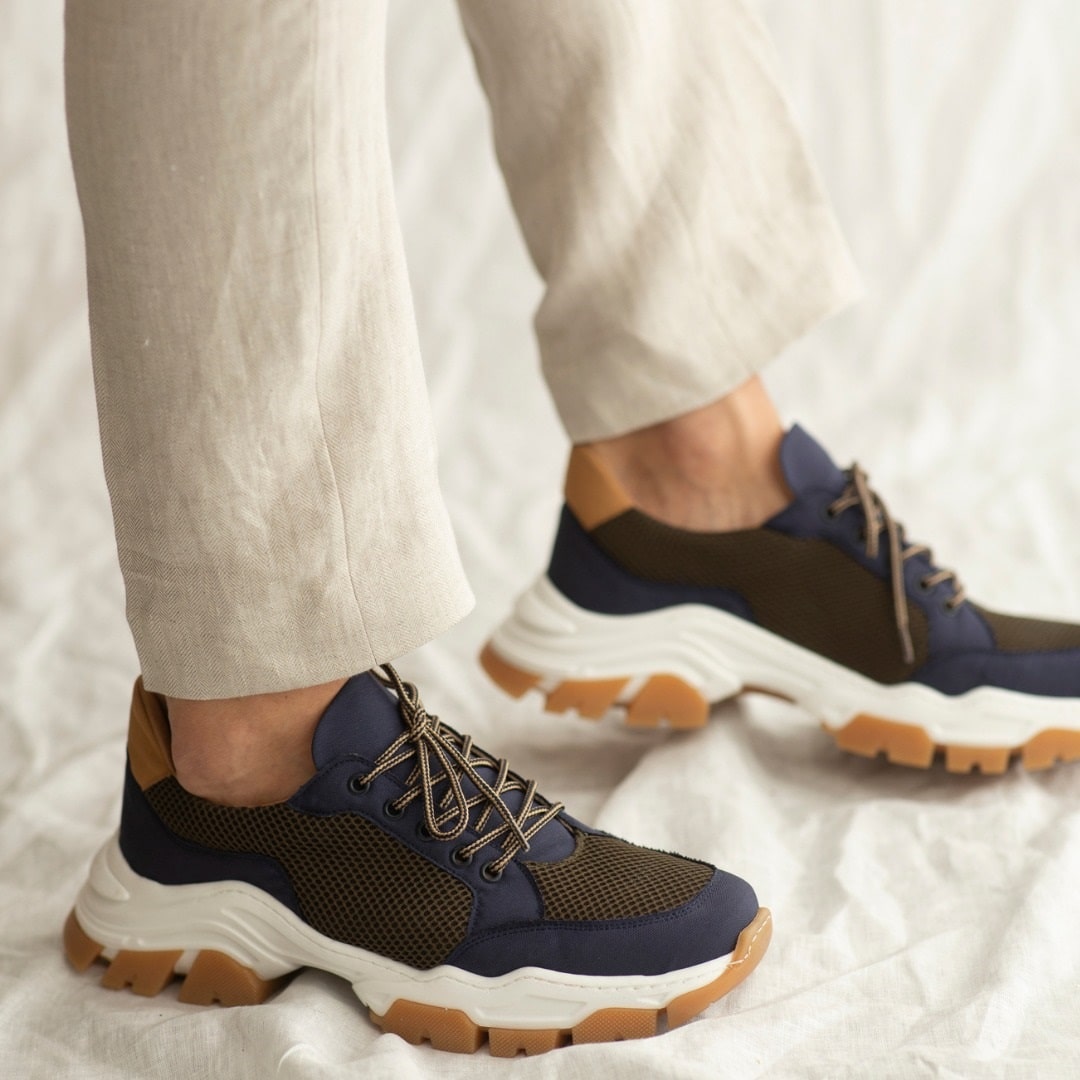1
HOME > Business >
HOW TO MAKE FOOTWEAR MORE SUSTAINABLE
Written by Ivan Yaskey in Business on the 13th February 2023

Think about the design of a standard, modern-day pair of shoes. You’re picturing something lightweight and paneled, perhaps with a mix of mesh-like textiles, leather, or a synthetic substitute. Your mind travels to the midsole and outsole, two components made of rubber and foam – both synthetic compounds – that provide a mixture of traction and impact absorption for whatever you’re doing. While apparel shoulders much of the blame for the fashion industry’s environmental footprint, the highly synthetic, multi-material construction of footwear plays a visible role and makes sustainability an ongoing challenge:
The Impact of the Footwear Industry
It’s estimated that about 20 billion pairs of shoes get manufactured each year. Based on how quickly the materials wear out, about 300 million pairs get thrown out each year in the U.S. alone – typically headed for a landfill due to the complexity of their construction and the frequent use of synthetic components for the upper, sole unit, insole, and even the laces. Considering this pattern, about 90 percent of all footwear finds itself to a landfill. Through this pattern, the footwear industry alone contributes to about 1.4 percent of all greenhouse gases entering the atmosphere. In total, this amount is based on:
- Leather: Despite synthetics having a growing presence in apparel and footwear, leather is used for about one-third of all shoes sold. Although proponents claim leather biodegrades and is therefore superior to synthetics, the full production process leaves a massive impact on our world – from land cleared and water diverted to raise cattle to the chrome-based tanning process that pollutes waterways and groundwater with harmful chemicals.
- Synthetics: As already mentioned, modern-day shoes use multiple synthetic components – nearly half of all footwear involves synthetic rubber or plastic, and that doesn’t take nylon or polyester mesh uppers into account. Just as with all synthetic materials, these are petroleum based and take decades, if not centuries, to break down.
- Design: The average pair of trainers involves more than 50 components, from materials to adhesives. This structure means that breaking down footwear into reusable, recyclable components remains a challenge.
- The supply chain: This truly applies to all industries in the present time. More specific to footwear, land needs to be cleared to raise cattle, which contribute to global methane emissions and consume water resources. Chrome tanning, meanwhile, pollutes local water supplies and increases a region’s cancer risks. Then, on top of the impact of generating synthetic fabrics, shoes need to be packaged – again, primarily using plastic – and shipped. Manufacturing also means that the multitude of components going into a single shoe arrive from several locations to be assembled.
- Not easy to recycle: In North America and Europe, apparel recycling programs continue to grow – although the mounds of waste accumulating in Africa and parts of South America call their validity and effectiveness into question. The multi-component, multi-material construction of footwear complicates this process. Even seemingly simple styles need to be broken down, and materials still get destined for the landfill.

Sustainability Strategies
These factors aren’t to say that sustainable footwear is impossible. Grandview Research reports that the sustainable footwear market is predicted to grow 5.8 percent per year through 2027. Meanwhile, roughly 40 percent of footwear brands have dabbled with sustainability in some form, be it launching a dedicated department to expand into this area or introducing a line made with recycled or more biodegradable components. In this direction, strategies for more sustainable footwear are taking on the following forms:
Manufacturing
A handful of strategies have emerged: Creating shoes requiring fewer components, and keeping production local to reduce carbon emissions associated with the supply chain. At this stage, where and how materials get sourced adds to this impact, with emphasis being placed on natural fibers, natural over synthetic rubber, and vegetable tanning leather. Just as with apparel, Fair Trade also signifies safer conditions for workers and no child labor involved.

More Natural Fibers
Building from these points, utilizing materials not sourced from petroleum or animal populations further helps decrease environmental impact, and results in a product that is more likely to break down, rather than remain in a landfill for hundreds of years or generate microplastics. Of course, this approach isn’t absolute. Conventional cotton still requires significant water to produce, and this process also doesn’t account for dyeing textile-based materials. However, in the move against plastics and synthetics, organic cotton, bamboo, and wool, plus hemp, flax, and linen, achieve the breathability many in the present seek from footwear while offering a composition free of petroleum. Moving to the outsole, natural rubber, cork, algae, and coconut replace the synthetic foams and rubber currently used across all styles.
Then, for more of a mid-ground, vegan leather sourced from fruit and vegetable waste or another natural source like cacti is partially biodegradable and ends up having a smaller footprint than traditional leather and petroleum-based materials like PVC and polyurethane. Solutions gaining more visibility here include mushroom, apple, grape, and coffee leather, as well as Piñatex from pineapple scraps. As a secondary solution, recycled textiles – from water bottles and tires, as well as repurposed apparel – offer new life for materials destined for a landfill and require less energy and emissions overall to produce. Yet, as we have pointed out, this solution isn’t perfect: Recycled polyester still generates microplastics, and the multi-component designs of modern footwear mean that these materials will, at some point, reach a landfill environment. In this direction, sourcing and production add to a material’s overall impact. For example, rain versus irrigation is used to grow organic cotton, while bamboo and hemp require less water overall to grow. Natural rubber, meanwhile, helps manage carbon emissions and benefits the trees’ growth. Yet, transforming bamboo into a fabric requires more chemicals, placing this material closer to a partial synthetic like rayon or viscose.

Examples of such efforts, so far, include:
- Puma: Puma started experimenting with more sustainable approaches to design. Their InCycle shoe features an upper made with a mix of organic cotton and linen and an outsole of APINATbio, a biodegradable plastic designed to compost. The design, when shredded, is intended to be broken down by microorganisms once buried in a compost environment.
- Salomon: The popular trail-running shoe brand has started using mesh made from recycled plastic bottles plus corn fibers. Outsoles utilize coffee grounds to help control odors.
- Allbirds: One of the better-known eco-friendly footwear brands, Allbirds has stated its commitment to sourcing wools from farms that prioritize animal welfare and sustainable land management.
Product Lifespan
Trends in sustainable footwear reflect the overarching approach of the future of fashion: Creating garments, shoes, and accessories that are built to last longer, that can be easily repaired, or that can break down or be repurposed in some form. As already mentioned, the design of modern footwear poses a challenge in this regard. However, designs with fewer components become easier to take apart and repurpose. Using biodegradable and compostable materials, meanwhile, limits the amount of petroleum-based components sitting in a landfill. Then, there’s reparability. Patagonia and Red Wing Shoes have offered to repair customers’ shoes for a number of years, in order to keep products out there and reduce related waste.

Supply Chains
Going back to a broader perspective, the supply chain frames sustainability. This starts with being conscientious of where and how materials are sourced, how long they last, and how they’ll break down or be repurposed at the end of a shoe’s lifespan. An ideal supply chain eliminates global crisscrossing to keep material construction and sourcing local, aims to reduce carbon emissions through manufacturing and transportation, and ensures most, if not all, components making up a pair of shoes have a second or extended life, rather than just make up plastic waste in a landfill. From here, packaging also needs to be factored in. Like manufacturing, packaging is another opportunity to limit plastic, including for product labeling, and to think about if materials can be recycled or composed. Third, the web 3.0 environment is already transforming how brands examine sampling – a time-consuming waste- and emissions-generating process. Virtual samples make adjustments more rapid, eliminate wasting materials on prototypes, and lessen carbon emissions generated by shipping overseas and airfreight transport.

Trending
2
3
4
5
6
7
8
9
10










